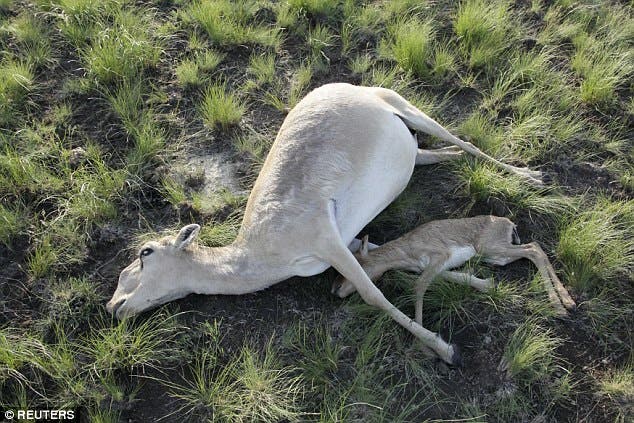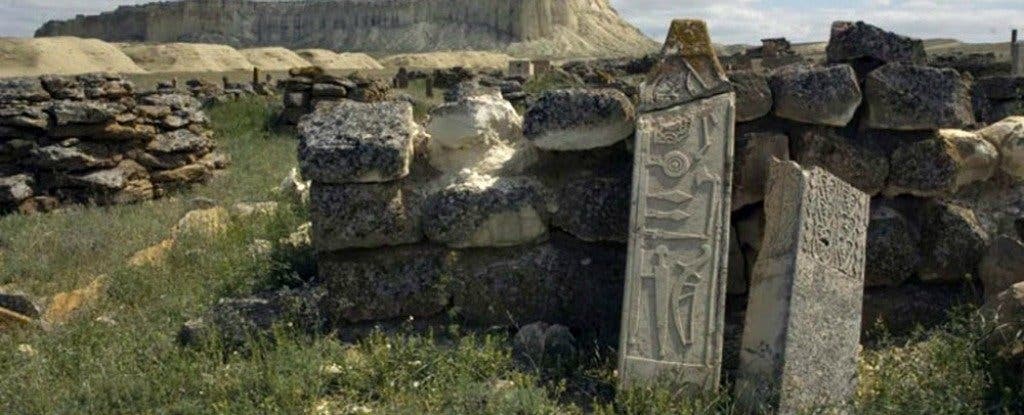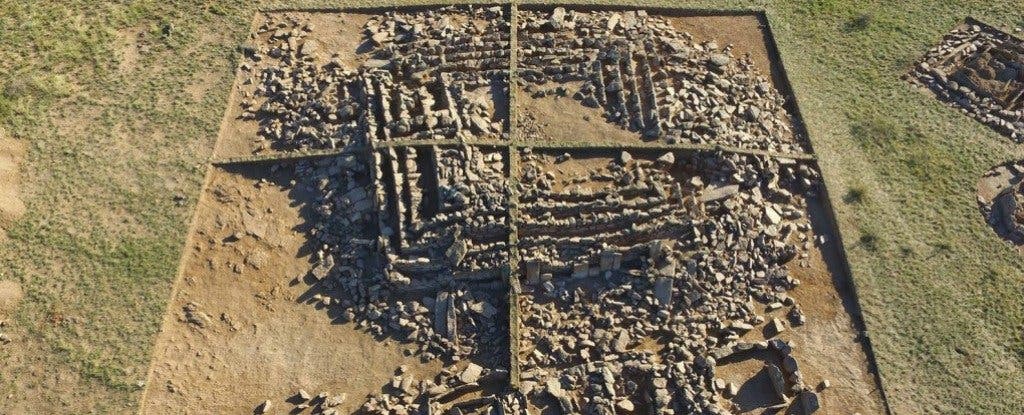One of the planet’s most endangered antelope, the saiga, suffered from a die-off of unprecedented scope. The massive loss of life from just a few weeks ago has conservationist groups worried about what future may hold for the species. But clues as to exactly what wiped out half of Kazakhstan’s saiga are starting to emerge, and scientists are looking at bacteria that normally co-exist with the antelope host, harmlessly living in their bodies as the main culprit.
Bacterial toxins associated with Pasteurella and possibly Clostridia bacteria in tissue samples taken from dead antelopes that appear to have been the cause of extensive bleeding in the animal’s internal viscera.
But the question they’re trying to answer is how, and why, did they turn on the saiga? Exactly what would have triggered these bacteria to become so deadly almost overnight is still baffling researchers.
“The extent of this die-off, and the speed it had, by spreading throughout the whole calving herd and killing all the animals, this has not been observed for any other species,” Steffen Zuther, a geoecologist and coordinator of the Atlyn Dala Conservation Initiative, told Live Science. “It’s really unheard of. The question is why it developed so rapidly and spread to all the animals.”
Who are the saiga
Saiga are listed as critically endangered by the International Union for the Conservation of Nature after their numbers fell to less than 21,000 in the 1990s. Their odds improved since then: there were an estimated 257,000 of them in Kazkhstan in 2014 together with a herd in Russia and a herd in Mongolia.
They have an unusual, oversized nose, called the proboscis, which is thought to help heat up the freezing air during the winter before it enters the lungs, and play a key role in the ecosystem of the arid steppes, helping to recycle nutrients into the soil.

Large die-offs are not unusual in saiga – in previous years as many as 12,000 of the creatures have died. Experts first noticed the die offs in late May when females started to die and then their calves.
However, the scale of this year’s deaths has shocked veterinarians and biologists. Two discrete populations some 180 miles (300km) apart suffered the die offs simultaneously.
Genetic analysis has shown the bacteria, were ordinary types that are commonly found in the bodies of ruminants like saiga. They are not known to cause disease in animals unless their immune systems were weakened.
In just four days, 60,000 of the antelope there perished, a rate of spread that defies conventional epidemiology of disease. The die-off ended by June this year, claiming the life of 134,000 animals. If an aggressive strain was indeed spreading through the herds, the die-offs should have taken much longer than what we saw in Kazakhstan.

Professor Richard Kock, a wildlife veterinarian from the Royal Veterinary College in London, was part of the team that went to Kazakhstan to investigate the deaths.He told Nature:
“I have worked in veterinary diseases all my career and I have never seen 100 per cent mortality. We had a herd of 60,000 aggregated and they all died. That is extraordinary. Epidemiologically, you cannot get a directly transmitted disease to kill a whole population in seven days… I’d say it’s a polymicrobial disease.”
So the scientists turned their attention to aspects of the environment that might have triggered a change in the bacteria. Bitter cold over the winter and a damp spring may have weakened the antelopes’ immune systems while also giving the bacteria the perfect conditions to multiply.
This is when pathogens present in the body have seized an opportunity to multiply to a point that they kill their host. The researchers are now searching for what may have given them this opportunity.
‘If we understand the factors that contribute to these events, we may be able to mitigate or prevent them in the future,” said E J Milner-Gulland, a conservation biologist at Imperial College London. “This is important because three of the four remaining populations of saiga are at such low levels that an event like this could wipe them out completely.”





